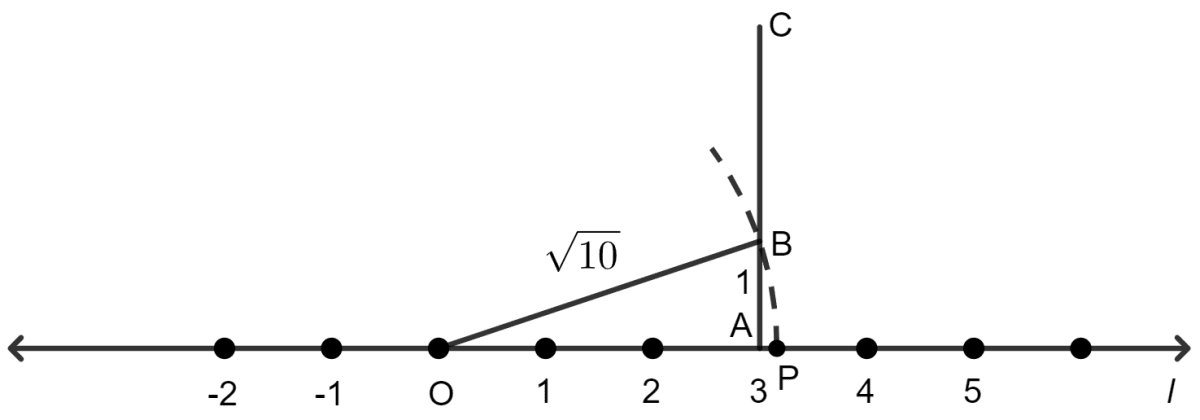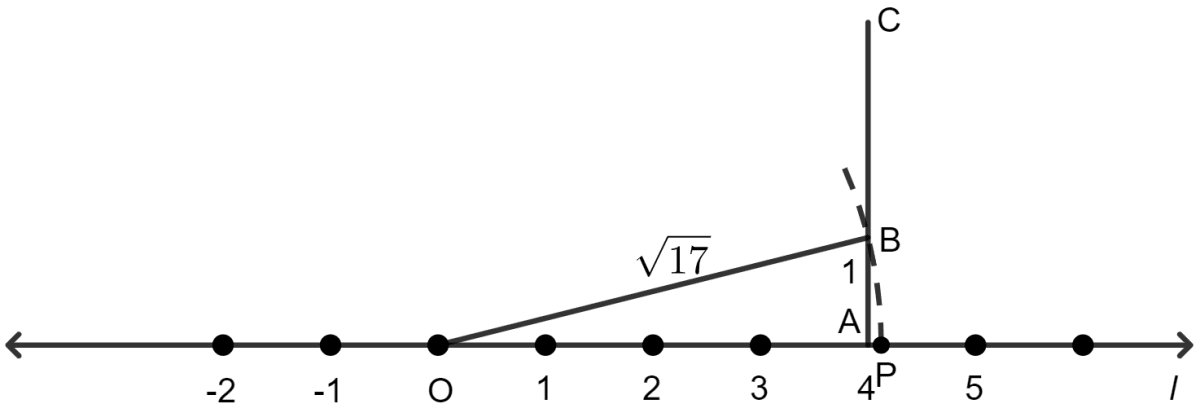Mathematics
Locate and on the number line.
Rational Irrational Nos
23 Likes
Answer
Locating :
Representing 10 as the sum of squares of two natural numbers:
10 = 9 + 1 = 32 + 12
Let l be the number line. If point O represents number 0 and point A represents number 3, then draw a line segment OA = 3 units.
At A, draw AC ⟂ OA. From AC, cut off AB = 1 unit.
We observe that OAB is a right angled triangle at A. By Pythagoras theorem, we get:
With O as centre and radius = OB, we draw an arc of a circle to meet the number line l at point P.
As OP = OB = units, the point P will represent the number on the number line as shown in the figure below:

Locating :
Representing 17 as the sum of squares of two natural numbers:
17 = 16 + 1 = 42 + 12
Let l be the number line. If point O represents number 0 and point A represents number 4, then draw a line segment OA = 4 units.
At A, draw AC ⟂ OA. From AC, cut off AB = 1 unit.
We observe that OAB is a right angled triangle at A. By Pythagoras theorem, we get:
With O as centre and radius = OB, we draw an arc of a circle to meet the number line l at point P.
As OP = OB = units, the point P will represent the number on the number line as shown in the figure below:

Answered By
12 Likes
Related Questions
Prove that is an irrational number. Hence, show that is an irrational number.
Prove that the following numbers are irrational:
Write the decimal expansion of each of the following numbers and say what kind of decimal expansion each has:
Without actually performing the long division, state whether the following rational numbers will have a terminating decimal expansion or a non-terminating repeating decimal expansion: